Este hombre no para!
Mutable Instruments Anushri – a cheerful analog synth (that doesn’t suck at drums too)
Analog synthesis
Analog VCO with saw and pulse waveforms, freely mixable.
Optional automatic VCO calibration in software for those who don’t like messing with trimmers.
-1 or -2 octaves sub-oscillator.
Auxiliary square oscillator with accurate digital tuning available as an FM modulator or as a sync master for the VCO (yes, it means “ewwwwwwiowwww” and “wongwong”).
12dB/octave multimode filter, with smooth self-oscillation.
Post-filter overdrive/fuzz circuit.
Linear VCA.
Modulation sources
1 main ADSR envelope routable to pitch, pulse width, cutoff frequency.
1 simple 1-parameter envelope (morphing through various stages, including the shape of the main ADSR, and a rigid “GATE” style envelope) routed to VCA.
Velocity routed to either cutoff frequency or VCA gain.
1 LFO routable to pitch, pulse-width and cutoff frequency ; with 8 waveforms (triangle, square, ascending and descending ramps, S&H, bernouilli process, piecewise linear random process aka “autodubstep”, noise).
1 triangle LFO for vibrato and/or growl.
Arpeggiator and sequencer
Arpeggiator with 4 modes (up, down, up&down, random) ; 1 to 2 octaves ; 6 patterns.
SH-101-style note sequencer with step by step recording, up to 128 notes. Easy recording of pauses, ties, and glides.
Tempo set by internal clock with shuffle, external MIDI clock or external 6/12/24 ppqn trigger.
Drum machine
Algorithmic drum pattern generator using an innovative “pattern sculpting” approach – allowing a large combination of drum patterns to be sculpted from 5 knobs
Digital sound generation of BD / SD / HH with tone control
Drum sounds can be freely triggered from an external sequencer using MIDI channel 10
Interface
9 pots and 4 switches for hands-on access to synthesis parameters.
9 “soft-pots” for editing modulations / arpeggiator / drum machine settings.
3 dedicated navigation buttons (“modulations”, “arpeggiator / keyboard”, “drum machine”).
3 dedicated sequencer buttons (“record”, “play”, “hold / rest”).
In/out
VCO CV in/out (Note: manual VCO calibration is required for accurate 1V/Oct I/O).
VCF CV in/out (Note: manual VCF calibration is required for accurate 1V/Oct I/O).
Gate signal in/out (5V level for output).
24, 12 or 6 ppqn clock signal in/out (5V level for output).
External Audio in.
Audio out.
MIDI in/out (thru + arpeggiator and sequencer notes).
CC control over modulations and some of the digitally controlled synthesis parameters. Some parameters like filter resonance cannot be CC-controlled.
“Eurorackable”
Remove main audio in / out and solder corresponding minijacks on PCB
Remove LT1054 and solder 2x5 power connector
Route MIDI in/out to front panel (if you want…). And that’s it!
Availability
DIY product (full kit)
Price < 200€ / kit
Available < October 2012
Alguien escribió:
How the drum machine works:
You have 9 knobs to control it.
3 or them are “morphing” through different types of drum sounds for BD / SD / HH. Sort of a magic 1 button “tone control” that goes from 606 to 909 through all possible values including 734.
1 of them is BD vs SD/HH xfade.
2 of them are controlling the “genre” in which the drum engine improvises (yes it does fluctuate and add some random variations when it fancies). Technically, it’s the X/Y position on a Kohonen Map learned on a bank of 48 drum patterns that I recorded in a hurry thursday afternoon at 3 PM. Will train the model on more and better material later.
3 of them control how much the pattern is “filled” with BD, SD and HH. Set to 0 and you have something with none of that instrument. Set to max and it’s 16th notes, with accent still emphasizing the original structure of the rhythm. Inbetween you have N “hits” of the instrument strategically distributed over the pattern under the genre constraint. It’s super easy to twist the knobs and make a pattern evolve with that.

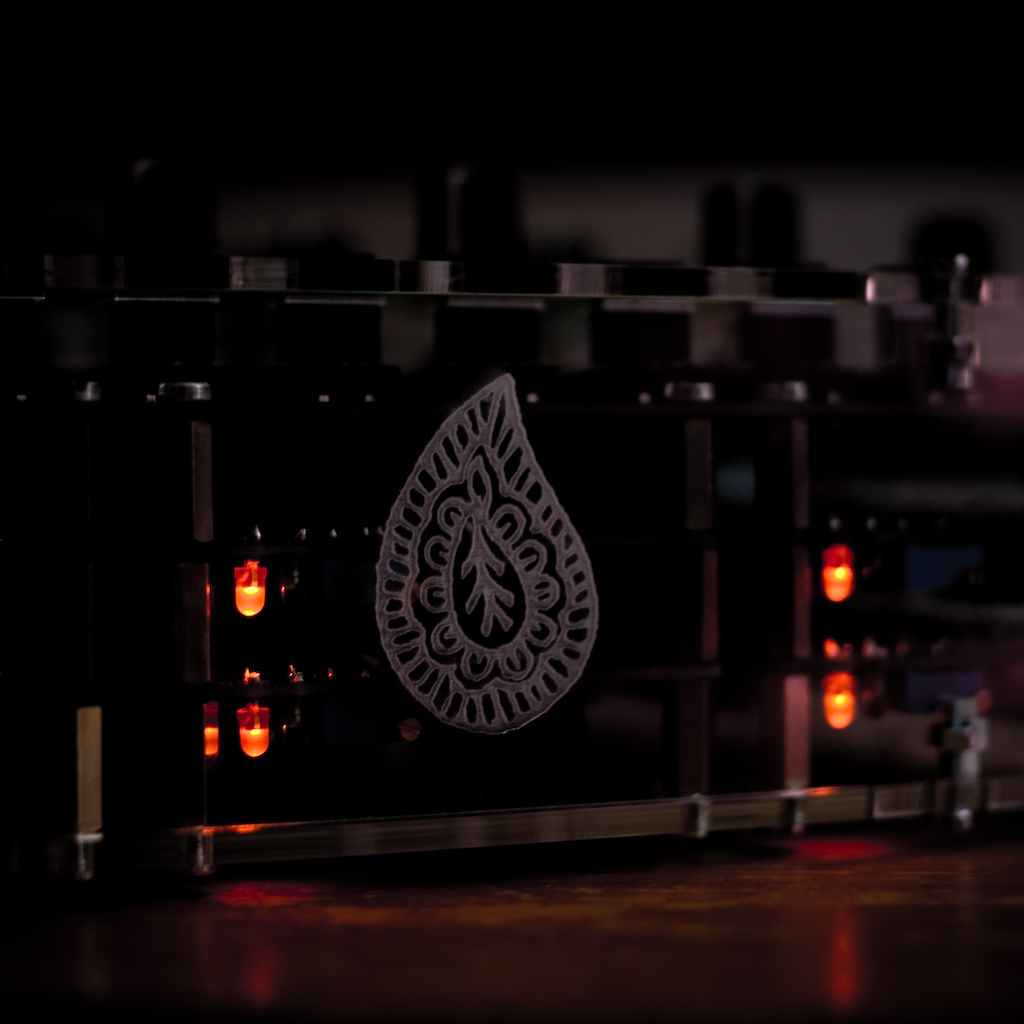
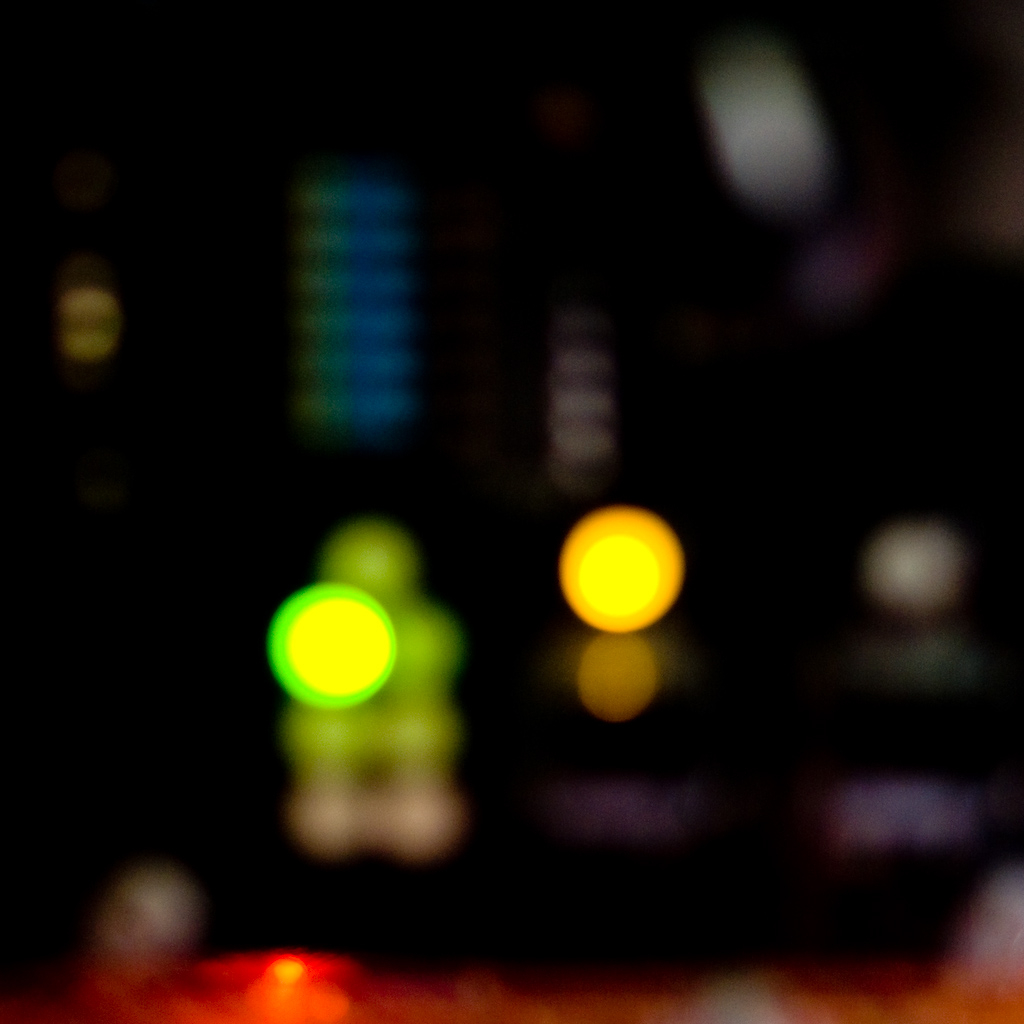
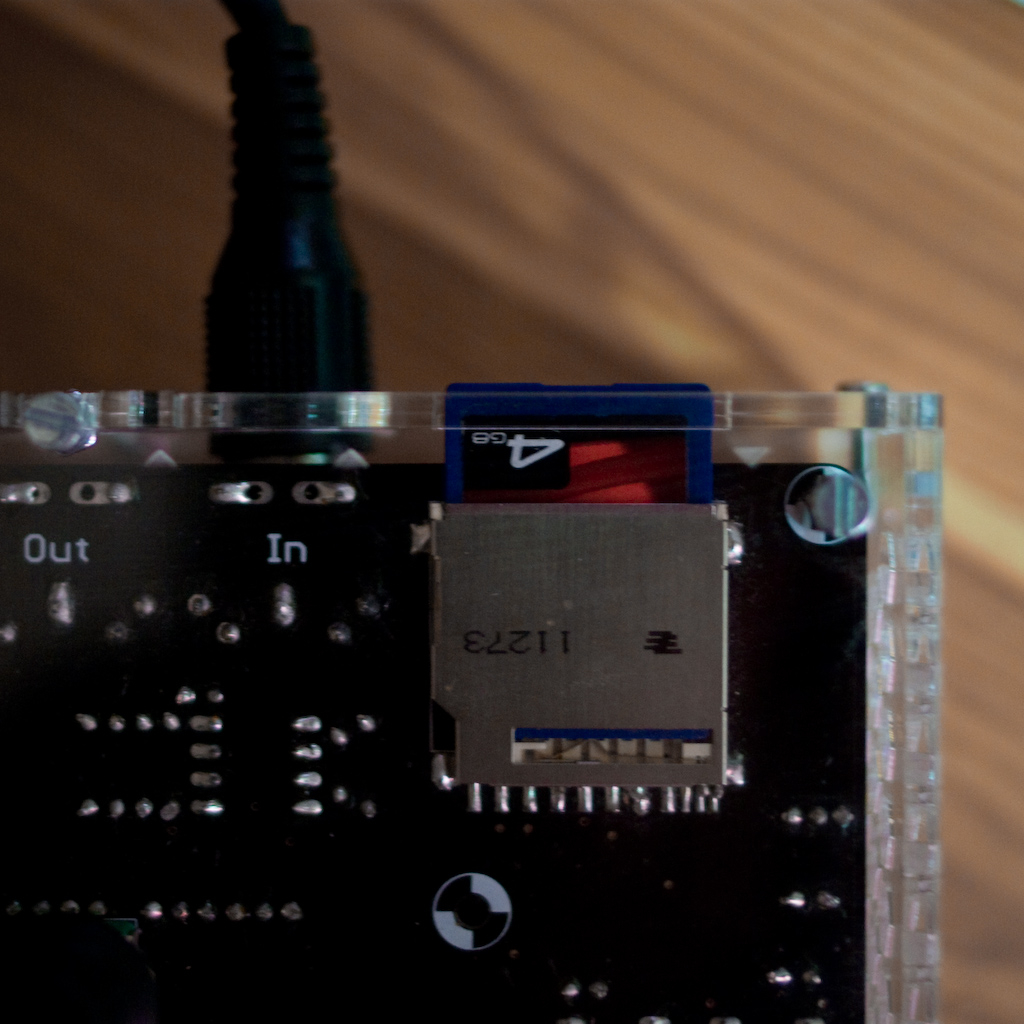
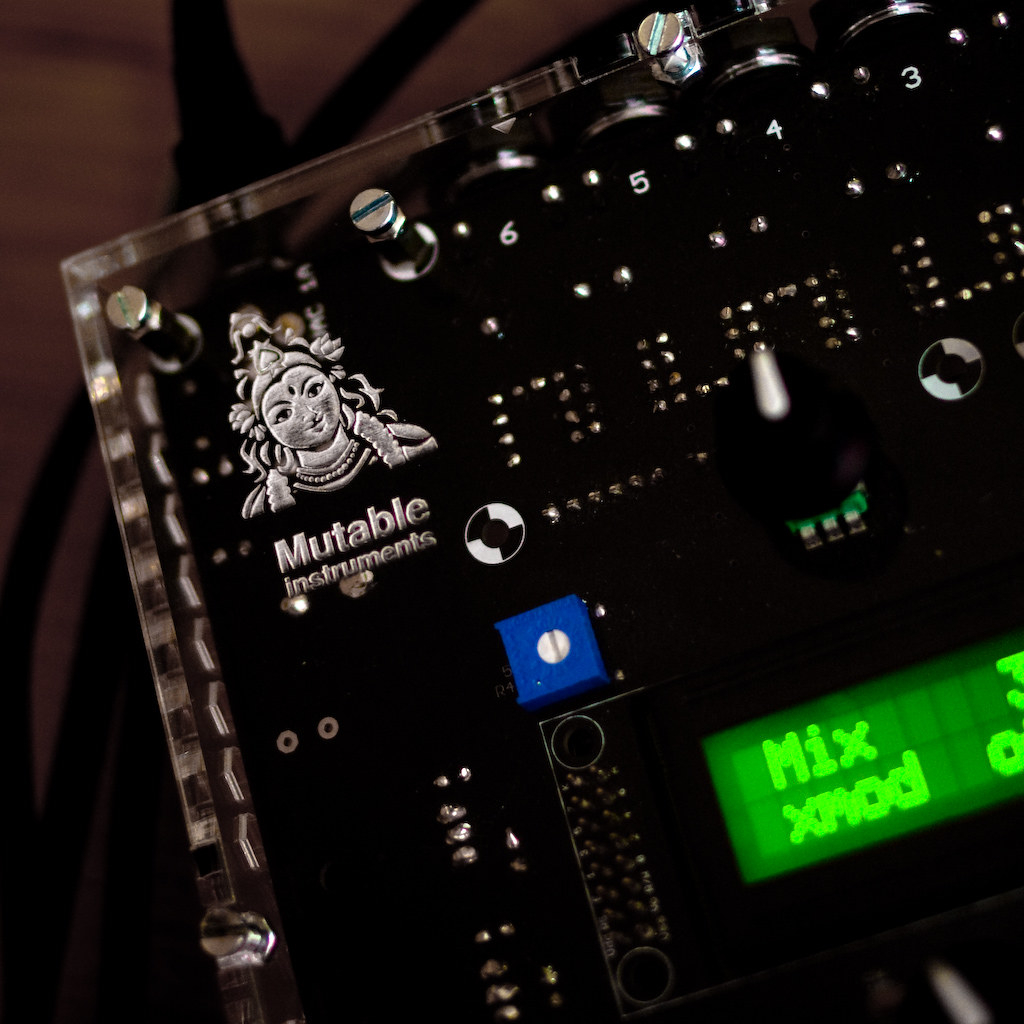


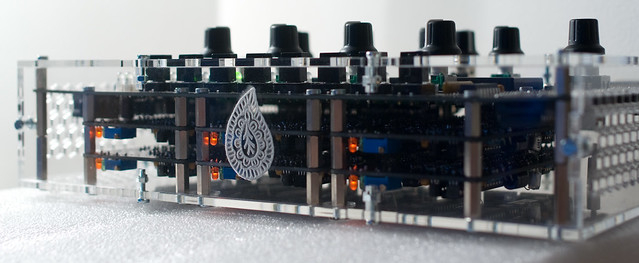
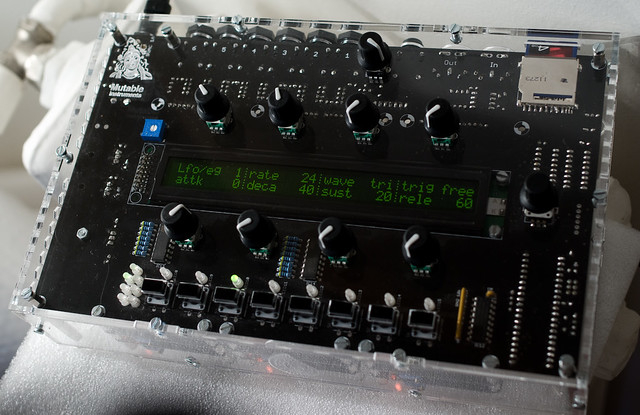
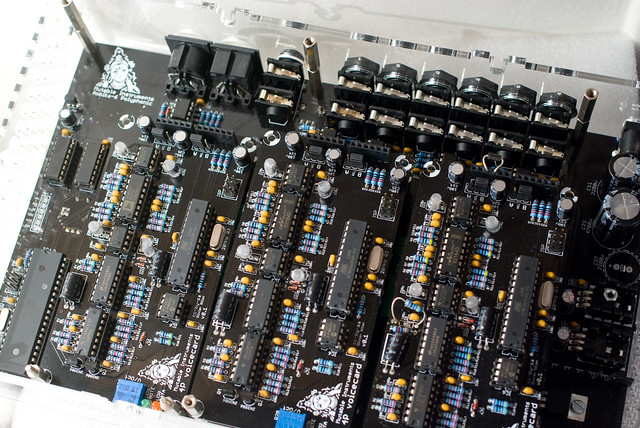
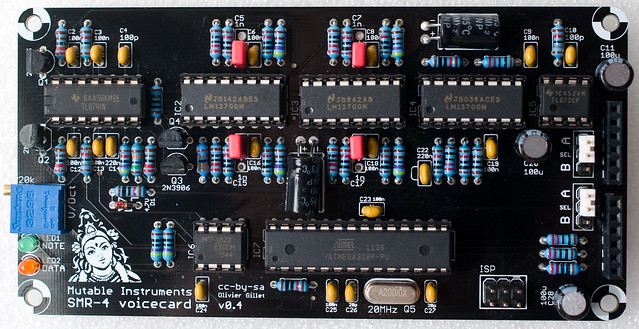
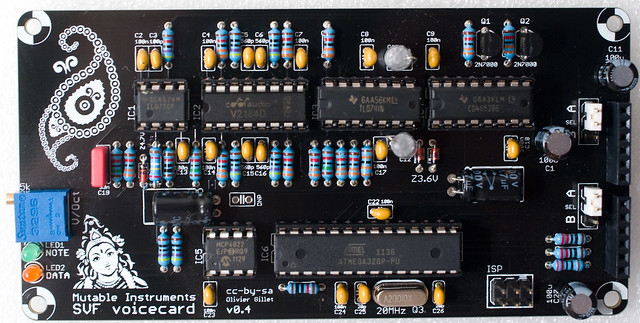


 mod
mod 

